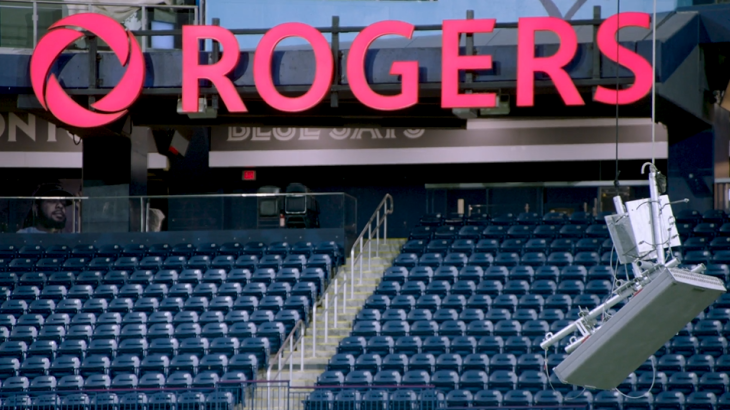
Competitors claim similar treatment by Rogers
By Ahmad Hathout
Rogers has responded to an allegation of undue preference with respect to a distant interconnection point it wants a small telecom to use for wholesale internet, saying it is up to the network builder, per its tariff, to determine where that traffic handoff will happen and that the CRTC has approved and affirmed the meet-me point in question.
Fibernetics filed a Part 1 last month alleging that Rogers is giving itself an undue preference by forcing the Cambridge, Ont.-based telecom to hook up to an interconnection office half a kilometre away from the one it currently uses with Rogers in Calgary. The difference between the two TPIA lines, Fibernetics says, is that it is using a third-party, instead of Rogers, to haul the traffic back to its office for the interconnection in question. Fibernetics says the third-party already has fibre running to the Rogers building it’s already using with its first TPIA arrangement.
Rogers is urging the CRTC to reject the application, saying the location of the meet-me point “is the purview of the wholesale network builder and provider.
“It is not up to resellers to decide where specific facilities are to be built and located,” it said. “If that was the case, facility-based carriers would have to establish multiple [points of interconnection] at excessive costs.”
To back its point, Rogers cites a previous CRTC decision that rejected an application by City Wide to force Eastlink to allow it to connect to another interconnection point.
Rogers says the interconnection point in question – which Fibernetics says would cost it more money and build-time to use – was a carryover from its Shaw purchase. So Rogers points to the Shaw TPIA it assumed, which stipulates the following, according to the cable giant: “Customers are responsible to interconnect to one or more POIs designated by Shaw.”
That interconnection point was placed in order to facilitate interconnections, Rogers says, adding it in no way provides it an undue preference. “This location is the result of network design and fully complies with the CRTC’s interconnection regime,” Rogers says, adding another ISP has already built to that interconnection point.
“The Commission has found [in prior decisions] that the outside meet-me point is a cost-effective interconnection option for competitors,” it said. “It is accessible to third party backhaul providers to interconnect without requiring co-location within Rogers’ facilities and has sufficient capacity to serve TPIA interconnection requirements.”
“Rogers is not an Incumbent Local Exchange Carrier (ILEC),” the cable carrier added. “As such, it is not mandated, nor does it have the capacity to build, maintain, or accommodate co-location facilities for third parties. Nor is Rogers structurally equipped to manage such co-locations. Again, as per CRTC 2001-640 and the tariff, the Meet-Me Point designated by the wholesale cable carrier is the proper location for TPIA interconnections. The Meet-Me Point is reasonably accessible and available, as it is in a public right of way.”
If the CRTC mandates an outside interconnection point, Rogers argues this could trigger other wholesalers asking for different interconnection locations, which it says would “necessitate a complex costing and tariff rate setting process.” It says the current interconnection point it has designated is the “most cost effective solution for the industry.”
Competitor responses
Some competitors, however, are backing Fibernetics.
Quebecor claims it has had a similar experience with its VMedia subsidiary in Alberta. VMedia, the claim goes, wanted to have a second TPIA service without using Rogers’s transport facilities, but Rogers allegedly refused “on reasonable terms.”
“Following negotiations that lasted several months, VMedia finally had to resign itself to using Rogers’ transport services in order to avoid additional delays that had become unacceptable in providing Internet services to its customers in Western Canada,” Quebecor said, adding there should only be one point of interconnection per province for aggregated TPIA service.
This practice, Quebecor argues, is a barrier to the deployment of affordable competitive services.
The Competitive Network Operators of Canada (CNOC), which represents indie telecoms, said in its intervention that, “the actions taken by Rogers in designing an interconnection to a remote meet-me point, despite the existing competitive facilities within the POI building, is not only unnecessary but clearly constitutes undue preference. Such actions deter service providers from leveraging competitive backhaul solutions, which ultimately drives up costs and limits options for consumers.
“The increased costs associated with Rogers’ practices create an artificial barrier to entry for competitors, reducing the availability of affordable internet options and stifling innovation within the market,” CNOC continues.
TekSavvy filed its own intervention supporting Fibernetics and claiming it has had a similar experience. “In its own experience with Rogers at its Heritage Shaw [points of interconnection], TekSavvy has always been required to include the name of the transport service provider in any TPIA Service Application. Rogers would therefore have known the name of Fibernetics’ intended provider of competitive transport services and related facilities, enabling Rogers to design an efficient, cost-effective interconnection using that provider’s existing facilities. Moreover, the Application makes clear that Rogers would have been aware of the most efficient interconnection design as a result of its own visit and inspection of the POI building alongside representatives of Fibernetics and the third-party transport provider,” TekSavvy claims.
“The example provided by Fibernetics is part of a larger and pervasive practice by Rogers that deters competitors from using competitive transport services across its Heritage Shaw serving territory, unduly self-preferences its own transport services and related facilities, and ultimately increases prices for consumers,” TekSavvy alleges.
Carry Telecom also claims a similar experience in its intervention, claiming it’s had to relocate its third-party traffic provider to interconnection points hundreds of meters from Rogers’s existing building, despite the third party having fibre in said building, at Calgary and Edmonton points of presence. Similar to Fibernetics’s claim, it said having to use a third-party provider has allowed it to use a more cost-effective solution than Rogers’s transport facilities.



